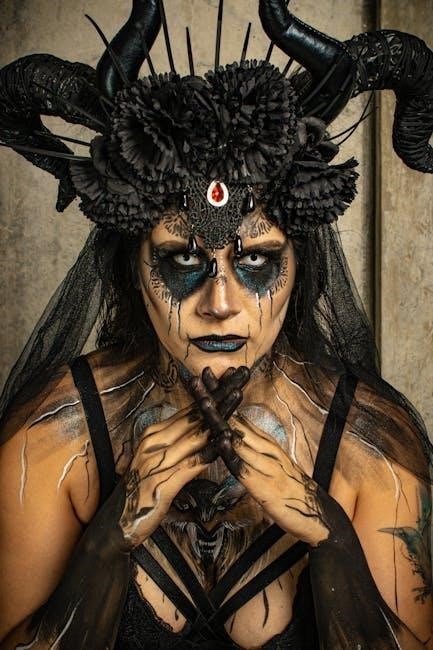The Munich Manual of Demonic Magic, known as Liber incantationum, exorcismorum et fascinationum variarum, is a 15th-century grimoire detailing black magic rituals and necromancy practices.

1.1 Overview of the Grimoire
The Munich Manual of Demonic Magic, or Liber incantationum, exorcismorum et fascinationum variarum, is a 15th-century grimoire manuscript housed in the Bavarian State Library (CLM 849). This medieval text is a comprehensive guide to black magic, necromancy, and demonic summoning. It contains detailed rituals, incantations, and instructions for commanding spirits, reflecting the occult practices of its time. The grimoire is significant for its dark magical content, offering insights into medieval European occult traditions. Its structure and language suggest it was intended for practitioners of forbidden arts, blending elements of ritual magic with theological themes. As a rare historical artifact, it remains a vital source for understanding pre-modern European demonology and magical practices.
1.2 Significance in Occult Studies
The Munich Manual of Demonic Magic holds profound significance in occult studies as a rare, well-preserved 15th-century grimoire. It provides unparalleled insights into medieval European magical practices, particularly in necromancy and demonology. Scholars value it for its detailed descriptions of rituals, hierarchies of demons, and specific incantations, offering a window into the forbidden knowledge of the time. The manuscript bridges theoretical and practical aspects of dark magic, making it a crucial resource for understanding historical occult traditions. Its influence is evident in later grimoires, and it remains a cornerstone for researchers exploring the evolution of magical thought and practices in pre-modern Europe. This text is indispensable for those studying the intersection of religion, magic, and culture during the medieval period.
Historical Background
The Munich Manual of Demonic Magic, a 15th-century grimoire, is housed in the Bavarian State Library. It provides insights into medieval dark magic rituals and practices.
2.1 Origins and Creation
The Munich Manual of Demonic Magic, or Liber incantationum, was composed in the 15th century, emerging from a period of heightened interest in occult practices across Europe. Its creation is attributed to an unknown author, likely a practitioner of dark magic, who compiled rituals, incantations, and detailed instructions for summoning and controlling demons. The manuscript reflects a blend of medieval folklore, necromancy, and Christian mystical traditions, offering a unique window into the esoteric knowledge of the time. The grimoire’s origins remain shrouded in mystery, but its content suggests a meticulous compilation of forbidden knowledge intended for secretive use by its creator or a select group of practitioners.
2.2 Current Location and Preservation
The Munich Manual of Demonic Magic is currently housed in the Bavarian State Library in Munich, Germany, cataloged under the reference CLM 849. This medieval manuscript has been meticulously preserved, ensuring its fragile pages remain intact for scholarly study. The library’s conservation efforts include controlled environmental conditions and limited access to protect the document from deterioration. Digital scans of the grimoire are also available, allowing researchers to explore its contents without handling the original. Its preservation underscores its historical significance, making it a vital resource for understanding medieval occult practices. The manuscript’s secure storage and digitization ensure its dark magical knowledge remains accessible for future generations while safeguarding its physical form.

Content and Structure
The Munich Manual of Demonic Magic contains detailed rituals, hierarchies of demons, and practices for summoning and controlling dark forces, structured to guide practitioners in occult arts.
3.1 Rituals and Ceremonies
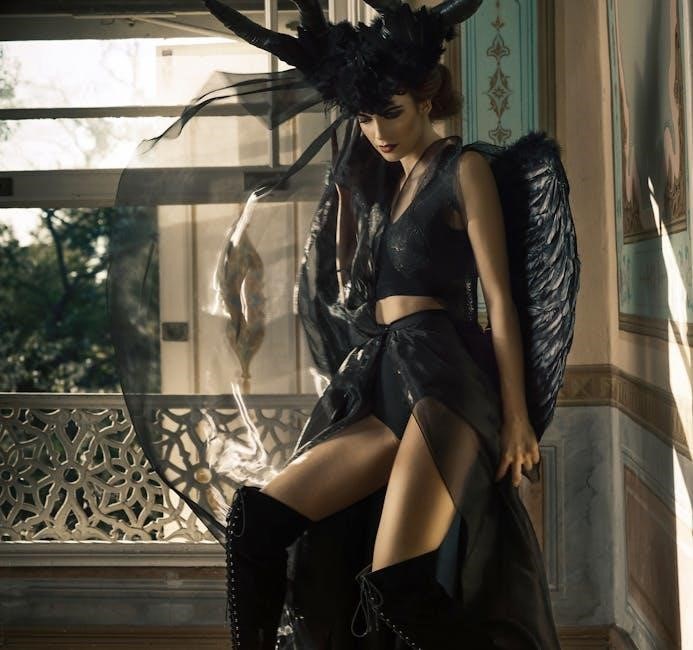
The Munich Manual of Demonic Magic provides intricate rituals and ceremonies for summoning and controlling demons, emphasizing purification, invocation, and the use of magical tools. These elaborate practices often involve specific chants, symbols, and offerings to ensure successful conjurations. The manual details the preparation of magical circles, protective measures, and the precise steps to bind demons to the practitioner’s will. Many rituals are designed for specific purposes, such as gaining power, protection, or insight. The ceremonies are structured to align with celestial alignments and require deep knowledge of occult symbolism. While some rituals focus on offensive magic, others emphasize defensive practices, showcasing the grimoire’s comprehensive approach to dark magic. These rituals remain significant in historical occult studies, offering insights into medieval magical practices and their cultural significance.
3.2 Demonology and Hierarchies
The Munich Manual of Demonic Magic meticulously outlines a structured demonology, detailing the ranks and roles of various demonic entities. It categorizes demons into hierarchies, often assigning them titles such as kings, dukes, or princes, each with distinct powers and domains. These classifications provide practitioners with a framework to understand the nature and abilities of each entity, aiding in their invocation and control. The manual describes the attributes, symbols, and specific rituals associated with each demon, emphasizing their place within the broader cosmology of dark magic. This hierarchical system is central to the grimoire’s teachings, offering a systematic approach to demonology that has influenced later occult traditions. The detailed descriptions and rankings serve as a guide for those seeking to navigate the complex world of demonic magic.
3.3 Practices of Dark Magic
The Munich Manual of Demonic Magic delves into intricate rituals for summoning and controlling malevolent entities, providing step-by-step instructions for practitioners. These rituals often involve specific chants, symbols, and sacred circles to safeguard the practitioner while invoking dark powers. The manual emphasizes the importance of purity of intent and the need for meticulous preparation to avoid perilous consequences. It also explores spellcraft aimed at manipulation, curses, and divination, blending necromancy with traditional magical practices. The text’s detailed approach to dark magic has made it a cornerstone in occult studies, offering insights into the ethical dilemmas and risks associated with such powerful and controversial practices. Its influence is evident in later grimoires and modern interpretations of dark magic.
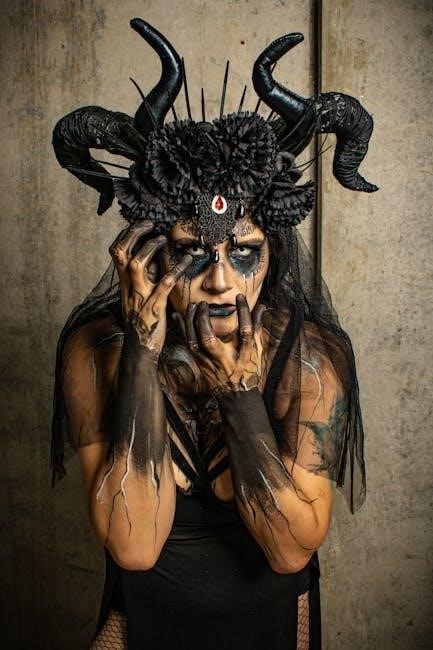
Historical Significance and Cultural Impact
The Munich Manual of Demonic Magic holds significant historical value as a 15th-century grimoire, influencing medieval European occultism and shaping perceptions of dark magic practices.
4.1 Influence on Medieval Magical Practices
The Munich Manual of Demonic Magic significantly influenced medieval magical practices by providing a structured framework for summoning and controlling demons. Its detailed rituals and hierarchies of demonic beings offered practitioners a systematic approach to dark magic, which was rare for the time. The grimoire’s emphasis on necromancy and black magic rituals filled a gap in occult literature, making it a valuable resource for those exploring forbidden arts. By codifying these practices, the manual contributed to the development of medieval occultism, shaping how magicians perceived and interacted with supernatural entities. Its influence extended beyond mere theory, offering practical guidance that was both controversial and groundbreaking in its era.
4.2 Role in Religious and Occult Contexts
The Munich Manual of Demonic Magic holds a significant place in religious and occult contexts as a forbidden yet influential text. It is often viewed as a bridge between medieval religious beliefs and occult practices, blending elements of Christianity with dark magic rituals. The grimoire’s detailed descriptions of demonic hierarchies and summoning practices made it a controversial yet sought-after resource for those exploring the forbidden arts. Despite its association with heresy, the manual reflects the broader medieval fascination with the supernatural and the divine. Its preservation in religious and occult circles underscores its enduring relevance, even as it remains a subject of both reverence and fear in modern occult movements.

Contemporary Relevance
The Munich Manual of Demonic Magic influences modern occult practices, academic studies, and popular culture, ensuring its relevance in contemporary discussions of dark magic and history.
5.1 Modern Interpretations and Uses
The Munich Manual of Demonic Magic has seen a resurgence in interest among modern scholars, occult practitioners, and enthusiasts. Its detailed rituals and hierarchies of demons are studied for historical insight and practical application. Many contemporary occultists adapt its practices, blending them with modern magical systems. Academics analyze the grimoire to understand medieval beliefs about magic and religion. Additionally, the manual inspires creative works, such as literature, art, and film, adding to its cultural significance. Its preservation in digital formats has made it accessible to a global audience, ensuring its relevance in both academic and esoteric circles today.
5.2 Influence on Popular Culture
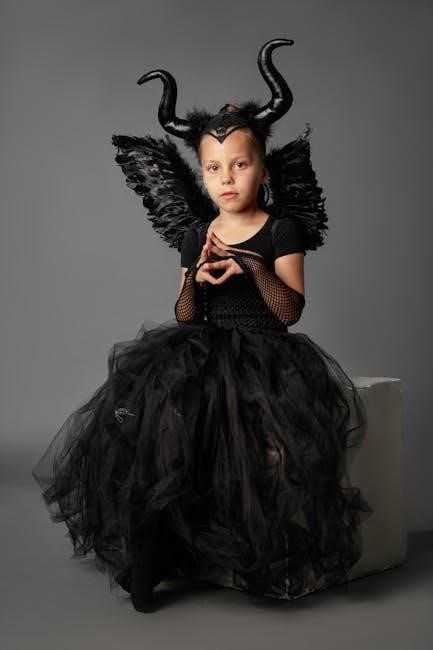
The Munich Manual of Demonic Magic has left an indelible mark on popular culture, inspiring countless works of fiction, film, and art. Its dark, mysterious rituals and detailed hierarchies of demons have captivated creators, shaping depictions of magic in media. Television shows, horror movies, and novels often draw inspiration from its grim content, using its themes to craft compelling narratives. Video games and role-playing games also incorporate elements from the grimoire, offering players a glimpse into its forbidden lore. The manual’s eerie aesthetic and historical significance make it a favorite among artists and writers, ensuring its influence endures in modern storytelling and entertainment. Its legacy continues to fuel the imagination of audiences worldwide.
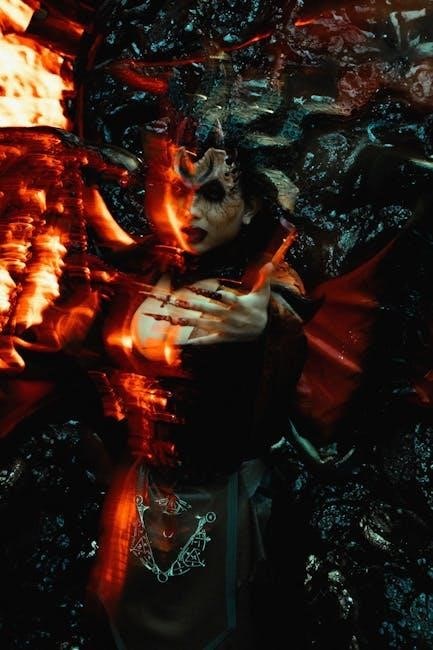
The Munich Manual of Demonic Magic stands as a significant artifact in the history of occult studies, offering a detailed exploration of dark magic and demonology. Its rituals, hierarchies, and practices provide insight into medieval beliefs and fears. Despite its controversial nature, the manual has influenced both religious and occult contexts, shaping perceptions of magic. Its modern relevance is evident in its adaptation by contemporary practitioners and its inspiration for popular culture. As a historical text, the Munich Manual remains a fascinating yet unsettling window into the past, ensuring its enduring legacy in the study of the occult and beyond.
